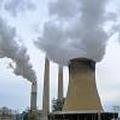 據地球正義(Earthjustice)致美國環保署的一份報告草稿顯示,接觸廢煤灰池的致癌風險,大於政府的安全標準一萬倍以上。不論是成人或小孩,若飲用的地下水受到廢煤灰釋出的砷汙染,將可能產生1%的罹癌機率。
據地球正義(Earthjustice)致美國環保署的一份報告草稿顯示,接觸廢煤灰池的致癌風險,大於政府的安全標準一萬倍以上。不論是成人或小孩,若飲用的地下水受到廢煤灰釋出的砷汙染,將可能產生1%的罹癌機率。
美國的燃煤電廠每年製造超過1.3億噸的廢料,其中包括飛塵、鍋爐底渣、滌氣汙泥,以及鍋爐汙物和廢煤等,內含許多有毒汙染物,如砷、汞、鉻化物、鉛、硒和氮化硼等。
鑑此,美國環保署曾於2000年5月證實,這些廢料確實會危害環境與人體健康,因此承諾會發展聯邦法規來處置這些廢料。不過迄今乃不見當局提出具體規定;請願人說,聯邦政府這種慢條斯理的態度,只會造成規範廢料管理的法規反覆不一、不適用且約束力有限的結果。由27個環保與公共健康團體組合的廣泛聯盟,齊力呼籲環保署立即調查煤灰廢料址,並改善汙染情形。
The risk of getting cancer from coal ash lagoons is 10,000 times greater than government safety standards allow, according to a draft report from the Environmental Protection Agency obtained by Earthjustice. It indicates that the cancer risk for adults and children drinking groundwater contaminated with arsenic from coal combustion waste dumps can be as high as 1 in 100.
U.S. coal fired power plants annually produce more than 130 million tons of waste - comprised of fly ash, bottom ash, and air emission scrubber sludge, as well as boiler cleaning wastes, and waste coal. These wastes contain a slew of toxic contaminants, including arsenic, mercury, chromium VI, lead, selenium and boron.
In May 2000 the EPA acknowledged risks from the waste to human health and the environment and committed to developing federal regulations for the waste. But the federal agency has yet to propose draft rules and the petitioners say this has left management of the waste covered by a patchwork of inconsistent, inadequate and often poorly enforced state regulations. A broad coalition of 27 environmental and public health groups requested that EPA take immediate action to investigate and abate pollution at coal ash dump sites.
全文及圖片詳見 ENS報導







